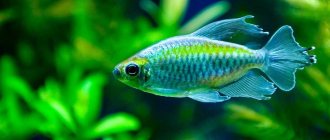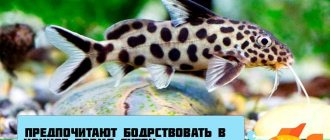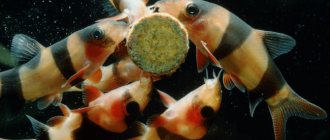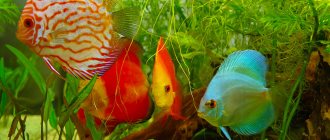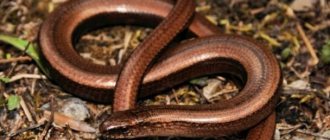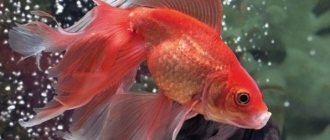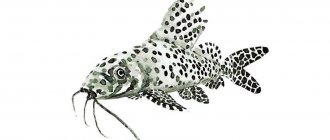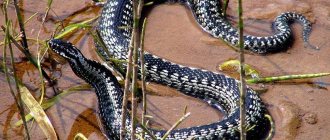Motherland
The labeo fish (family Cyprinidae) is found in Southeast Asia. Habitats are small streams, lakes and rivers with strong currents, densely overgrown with vegetation. Under natural conditions, the size of the labeo reaches 30 cm. The fish was first discovered in the floodplain of the Chaopraya River in the Kingdom of Thailand, in 1952 it was brought to Europe, and in 1957 it appeared among Soviet aquarists. Later, species were discovered living in Africa, where they are natural orderlies.
Labeos are omnivores, but prefer plant foods. During spawning (coinciding with the rainy season), the fish makes long migrations. Land drainage and dam construction have disrupted the labeo's life cycle, significantly reducing its population.
Health problems
Adult fish tolerate moderate changes in water parameters well and rarely get sick. But still, the species has some health problems, the most common:
- dropsy or rubella of carp (aeromonosis);
- increased skin mucousness.
In stressful situations, the labeo's color turns pale. Also, the color often changes in the evening, but this is considered normal.
Lobeo fish rarely get sick, but in stressful situations they can turn pale.
Appearance
The aquarium fish Labeo has an elongated torpedo-shaped body, a slightly arched back with a high “shark” fin, and a two-lobed tail. The head is small, the eyes are large. The oral apparatus has the shape of a scraper; there are two pairs of small whiskers around the mouth. In aquarium conditions, fish do not grow more than 12-15 cm. Females are somewhat larger than males, whose color is more intense.
There are 5 species in aquariums, the most famous is the bicolor labeo with a black velvety body color and a scarlet forked tail.
Types of labeo suitable for keeping in aquarium conditions:
Green (Congolese).
Albino Labeo.
Labeo black.
Labeo harlequin.
Young fish stay in groups; adults prefer solitude, meeting only for spawning.
Varieties of Labeo
More than 20 different subtypes of Labeo bicolor have been described. The following species are common in home aquarium keeping:
| Name | Description | Where does it live? |
| Black morulius | velvety coal-black body with a noticeable chocolate tint, in young animals the body color is grayish, with small ruby or gold scales, the labeo’s tail is also black, this is the largest species, growing up to 50-60 cm | fresh water bodies of Asia: Malaysia, Borneo, Thailand, Cambodia, Laos, Vietnam |
| Green (Thai) | has a unique rich olive color with a golden tint, silver belly, ruby fins | fresh water reservoirs in Thailand |
| Albino (Labeo phrenatus) | a longer and thinner body, the fish has scarlet eyes and a completely white body with a slight pink tint (sometimes the tail can be colored red) | fresh rivers of Thailand |
| Silver | a very rare type of fish with an unusual silvery color with iridescent tints, there is a dark spot in the tail area | found only in Africa, in the lower reaches of the Nile |
| Congolese | distinguished by an unusual sickle-shaped dorsal fin and original leopard-print coloring with dark green spots along the golden body | river systems of Gabon, Ogooue, Congo |
| Harlequin | has a multi-colored body color, and as it grows, the color changes; it is a large fish, reaching a length of 25-30 cm | African continent, Congo River basin |
| Glofish | a genetically modified subspecies that has the ability to glow under blue or ultraviolet light, found in two types - purple and orange | — |
Care and maintenance
For comfortable living, Labeo requires aquariums with a volume of at least 120 liters. The optimal parameters of aquarium water are presented in the table.
| View | Volume of water per 1 individual | Temperature | Acidity | Rigidity |
| Aquarium labeo | 60 l | 23-27˚С | pH 6.5-7.5 | GH 6-18 |
Under natural conditions, fish live in rivers and streams with strong currents. When kept in an aquarium, labeos need powerful filtration and aeration - the water must be saturated with oxygen.
Fish do not tolerate excess organic matter well and are demanding of fresh water. 20% of the aquarium water should be replaced with fresh water weekly. It is recommended to simulate conditions close to the natural habitat. Labeo prefer moderate diffused lighting, an aquarium with an open space near the front glass, densely planted with plants in the background. Algae should be selected with a strong root system that can cling to snags and stones and wide leaves that create shading.
Aquarium soil is preferably dark: pebbles, round stones, sand. Stones should not contain sharp corners. Labeo, which swims quickly in the lower layers of water, can get injured.
The fish does not tolerate excess ammonia, nitrates and nitrites in aquarium water. Tetra EasyBalance neutralizes phosphates and reduces the content of nitrogen compounds.
Labeo spends most of its time in open space. Needs a shelter where in case of danger it can hide. The aquarium must have a lid - nimble labeos can jump out of the water.
The fish is unpretentious in nutrition. Can eat live food, scraped greens (spinach, zucchini, lettuce), and oatmeal. In between feedings, he scrapes algae deposits from aquarium glasses.
Sinking granules are what you need for bottom dwellers such as labeo.
When buying balanced dry store food or chips, you should give preference to sinking food with a high fiber content (TetraPro Algae). The fish are fed twice a day. The feeding rate is calculated as follows: the food that has fallen to the bottom must be eaten within 5 minutes. If this does not happen, the portion is reduced.
Nutrition
Feeding Labeo at home will not cause any trouble for the aquarist, since most of the diet consists of plant foods, although pets will not refuse live food. The fish are fed with the following products:
- Dry food for herbivores.
- Lettuce, zucchini, cucumbers.
- Egg yolk, seaweed, oatmeal flakes.
When choosing food for pets, you should give preference to the sinking type, since due to the structure of the mouth, fish can only eat from the bottom or from another surface.
Feed morning and evening. If all the food is not eaten within 2 minutes, be sure to remove the leftovers and reduce the portion size.
Fasting days (once a week) will be very useful for Labeo.
Compatibility
Labeo Thai is a zonal fish that clearly knows the boundaries of its territory. Juveniles are shy and hide among plants most of the time. As the fish ages, it becomes more aggressive. Labeos do not get along well with their relatives. To avoid fights when keeping several fish, you need to reduce contact to a minimum by dividing the aquarium into zones using driftwood or decorations. Any fish injured as a result of the conflict should be removed until it has fully recovered.
Compatibility can be achieved by breeding more than four labeos in a large aquarium, to reduce concentration on a specific fish and build hierarchical relationships. Usually the strongest individual dominates the others. The alpha male swims throughout the aquarium, but does not allow strangers to enter his territory.
The compatibility table clearly demonstrates with whom Labeo gets along best.
Poor compatibility forces you to carefully select fish to keep together. Labeos often bully individuals with red or black coloring, mistaking them for their competitors. It is better not to keep bettas, goldfish, cichlids and catfish in the same aquarium with them.
Labeo bicolor calmly relates to small schooling fish that live in the upper layers of water: zebrafish, neon, barbs, gourami.
Features of behavior
Labeos spend most of their time in the bottom and middle layers of water. Fish are highly active and move quickly. At dusk they feel very confident. Pets are capable of swimming in a variety of body positions, including belly up. They can move along the bottom on pectoral fins, and also take poses that allow them to eat algae even from the undersides of aquatic plants. Descriptions of the behavior of fish often attract novice aquarists who get such pets without taking into account their needs and characteristics.
An interesting fact is that Labeo can be trained to be handled.
The territoriality of fish is pronounced. They protect their pasture areas from representatives of their own species and fish that have a similar body shape and color. Labeos are especially aggressive towards neighbors with bright tails. If the area of the home pond is insufficient, larger individuals can cause severe stress to others with their attacks. To avoid such problems, it is recommended to create partially separated zones in the aquarium, for which plants are best suited. The green walls will separate the fish from each other when eating and will prevent fights.
Albino labeos are much more delicate than bicolor and green ones. Because of this, it is strictly forbidden to combine them. Colored pets will begin to chase albinos, which will lead to their death.
Diseases
The bicolor labeo is an aquarium fish with high immunity. The main reason for her poor health is errors in care. The fish does not tolerate long-term stress that arises due to disturbances in maintenance:
- at low water temperatures;
- low compressor power;
- poor quality nutrition.
The labeo appears depressed, its color turns pale, and its appetite disappears. The fish react negatively to the movement of their shelter during cleaning. When populating the aquarium, the labeos are introduced first, allowed to get comfortable, then the rest of the fish are placed.
04:19
LABEO. MAINTENANCE, CARE, FEEDING, REPRODUCTION, COMPATIBILITY.
05:01
Labeo bicolor in an aquarium. Compatibility, maintenance, reproduction. Albino.
13:58
Identifying fish diseases! Their treatment. A guide for beginners. Lecture for aquarists.
Diseases that may appear during aquarium keeping:
- ichthyophthyriosis is a highly contagious disease, manifested by the appearance of white spots on the body and fins, and exhaustion;
- dropsy (carp rubella) - there is bloating, redness of the abdomen, ulcerations, loss of appetite;
- mucous skin - manifests itself as a whitish coating on the body, occurs with a bacterial or parasitic infection.
Sick fish are placed in quarantine and treated in a saline solution (1 tbsp per 10 liters of water). For dropsy, antimicrobial drugs are added to the feed.
Early diagnosis of diseases increases the chances of recovery.
Diseases
In fact, these representatives of the underwater kingdom are not prone to frequent illnesses. The causes of aquarium lobeo disease can be: improper care; poor equipment; temperature violation; loss of color brightness.
As soon as the fish shows the first symptoms of the disease, it is immediately quarantined. The liquid is disinfected with an antibiotic. All medications are purchased in specialized stores or from breeders.
Labeo is a beautiful species of fish that will decorate an aquarium and show the excellent taste of the owner. Maintaining them requires responsibility and patience. If you follow all the rules of maintenance and care, then there will be no problems with keeping and breeding Labeo.
Reproduction
Aquarium labeos are difficult to distinguish by gender; the female has a slightly more rounded abdomen. In juveniles, it is impossible to distinguish males from females. The fish reach sexual maturity at the age of 1.5-2 years.
How to easily determine the sex of a labeo? Pay attention to the dorsal and anal fins; their shape is curved in males and straight in females.
Natural spawning in aquarium conditions occurs extremely rarely. To stimulate sexual activity, professionals purchase hormonal gonatropic injections from fish farms, which are injected into the back muscles of males and females. In stores you can buy the non-hormonal drug "Nerestin" in the form of injections or additives to animal feed. The drug is given 2 times at intervals of a day.
Before spawning, the spawners are seated, the water temperature is reduced to 23-24˚C, fresh water is added every other day, and they are fed abundantly and variedly for 10-14 days. Prepare the spawning ground: an aquarium with a volume of at least 150 liters, a water level of 40 cm. The container should be equipped with a compressor and a filter, densely planted with plants, and equipped with dim lighting. A female and 2-3 males are placed in the aquarium. After administration of the drugs, spawning begins after 5-6 hours. If the female does not begin to spawn, reduce the water hardness.
It is prohibited to reduce the water temperature in the aquarium below 24-26˚C after the introduction of hormones; the fish may die.
Spawning lasts about half an hour, during which time the female spawns about 1000 eggs. Some of them swim in the water column, others sink to the bottom and are eaten by fish. Unfertilized eggs turn white within 2 hours, they are removed from the aquarium, and the spawners are removed. The eggs are transferred to a small container (up to 20 liters) with light aeration.
04:06
Labeo breeding. Part 1
04:19
LABEO. MAINTENANCE, CARE, FEEDING, REPRODUCTION, COMPATIBILITY.
07:25
Labeo breeding. Part 2
Caviar matures in 14-16 hours. After the embryos hatch, the water becomes cloudy and the litter may die. Frequent water changes can help save the situation. After 1-2 days, fry appear, capable of moving and feeding on ciliates. After a few days, egg yolk and brine shrimp eggs are introduced into the diet. The first two weeks are the most difficult - during this time up to half of the litter dies. The surviving fry grow unevenly.
Another reason for the difficulty of breeding black fish with a red tail is the lack of males. Initially there are few of them in the litter; during the process of growth, larger females slaughter weaker male juveniles. The solution is to remove fish with stunted growth.
Feeding
Despite the fact that the opinion that Labeo feeds exclusively on plants is recognized as erroneous, the diet of the fish includes periphyton in large quantities. The pet is not picky when choosing food; it accepts dry, live and frozen foods. You can pamper him with bloodworms, tubifex, coretra, and crustaceans. Combined foods include mixtures of cereals and oatmeal in the diet. Sometimes the owners treat the fish with egg yolk and white bread. The pet eats even boiled vegetables with an enviable appetite.
Labeo are peculiar “wolves” of the aquarium; they eat dead individuals, purifying the water from potential contaminants.
Reviews
A two-color labeo appeared in my aquarium and soon became my friend. At first, his behavior bothered me: he could lie on the bottom with his belly up or freeze vertically in the water column. I thought he was sick and would soon die, but the fish did not lose his appetite, it turned out that this was natural swimming for him. Ekaterina, 37 years old, Moscow
When I put my hand into the aquarium, the inquisitive labeo is right there. He gently pinches my hand, lightly tickling me with his antennae. The fish is very emotional: as soon as I bring my hand closer to the snag that he has chosen for his shelter, he suddenly turns pale, it seems that the fish is about to faint. It is very interesting to watch an aquarium labeo: judging by its behavior, the fish’s intelligence is quite high, it strictly controls the boundaries of its territory. Valentin Samoilov, 60 years old, Yaroslavl region.
Before getting an aquarium labeo, I read the literature and purchased a ceramic decoration in the form of an amphora with an entrance and exit. The fish immediately made it its refuge. You can often watch her swim in and out of hiding. Labeo is fast and nimble, makes rapid throws. Unpretentious in nutrition, willingly eats not only plant foods, but also bloodworms and tubifex.Juli88
My big mistake was introducing a pair of veiltails into a common aquarium. Although they were not red, for some reason my two-color labeo actively did not like them. After a couple of hours, the goldfish, with their fins badly torn, had to be urgently transplanted. In relation to other aquarium inhabitants, including snails, my Labeo is quite peaceful. Aquarist20_10
Lifestyle
They lead a mostly bottom-dwelling lifestyle. They can also live in the water column. Activity develops in the evening.
In addition to the contrasting coloring of the body and fins, the fish are surprising in their ability to stably position themselves in the water in a vertical state, and also with their belly up. This makes it easier for them to eat fouling on the walls of the tank or on the underside of leaves.
They are able to move along the bottom using their pectoral fins or jump out of a body of water.
